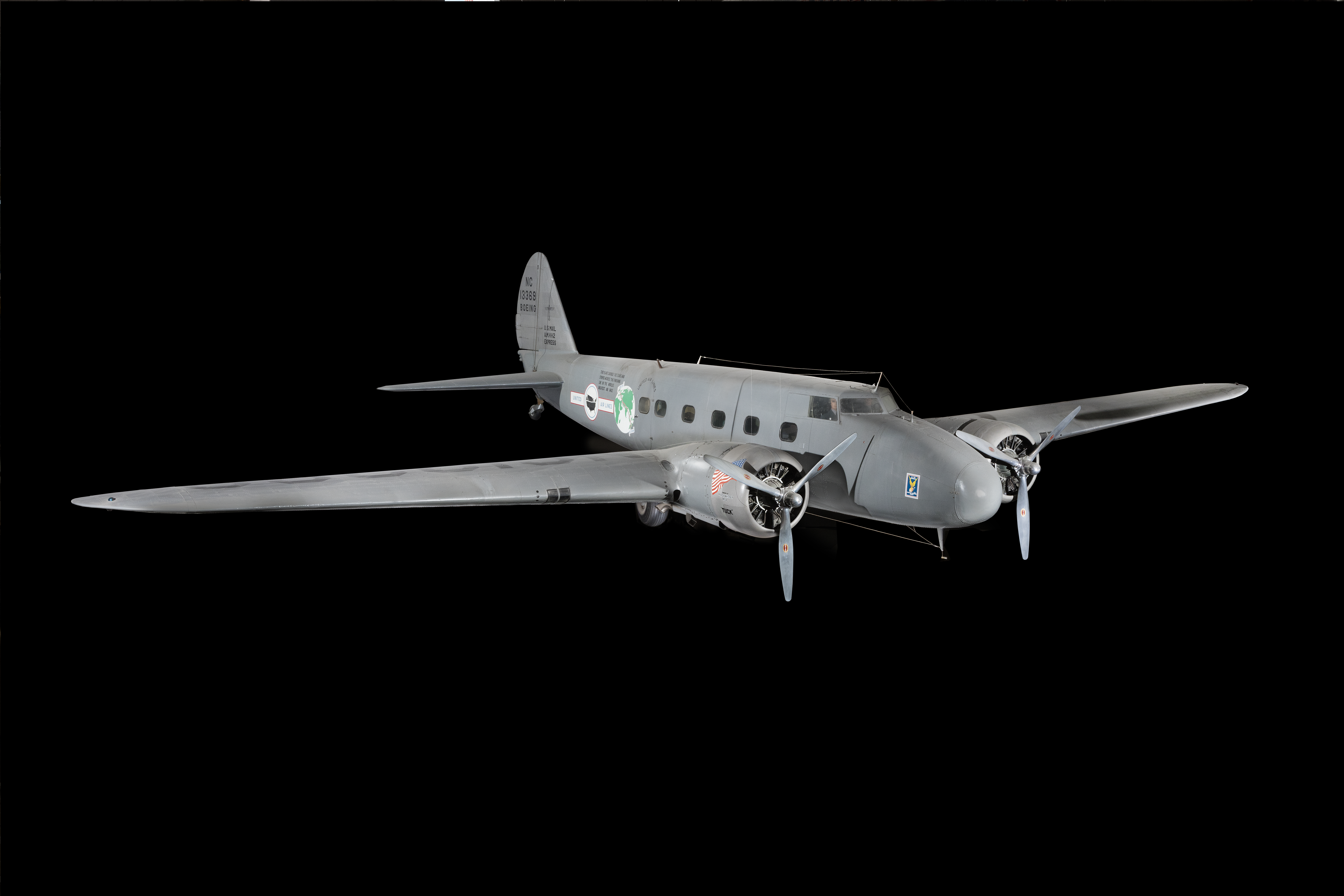
"Boeing 247-D." Smithsonian Institution.
Airplanes introduced new military strategies. Fighter and bomber planes enhanced attack power and transport planes moved soldiers and supplies to necessary areas. In World War II, both Allied and Axis powers used aviation to their advantage.
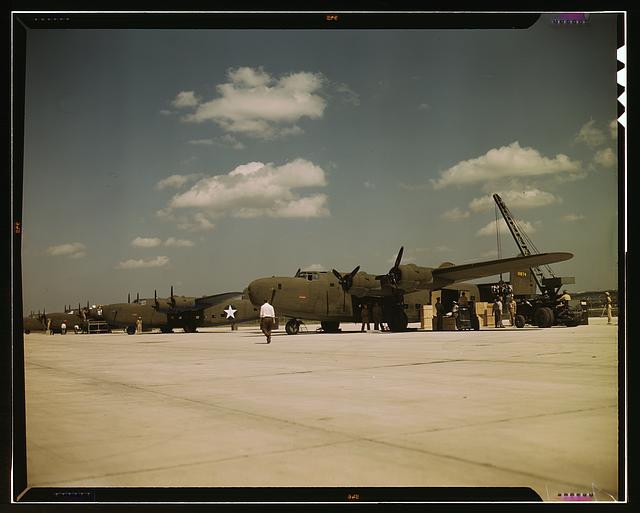
"Loading new transport planes at the Consolidated Aircraft
Corporation plant, Fort Worth, Texas." 1942. Library of Congress.
Germany used planes in its invasions and its aerial barrage in the Battle of Britain, while Japan used planes in the Pearl Harbor bombing. The Allies executed over 14,000 aerial attacks on D-Day in the Invasion of Normandy. The US ended World War II with planes dropping atomic bombs on Hiroshima and Nagasaki. In the past, the strength of a nation’s army and navy determined the course of the war. Now, the strength of a nation’s aerial fleet is also a major deciding factor.
The first commercial airliner was the 1933 Boeing 247, though its capacity was only 10 passengers. The biggest airplane today, the Airbus A380, can carry 853, but typically holds 400-550 passengers. Airplanes are now a major form of transportation, with the FAA handling over 16,100,000 flights and 1,000,000,000 US passengers yearly.

"Boeing 247-D." Smithsonian Institution.
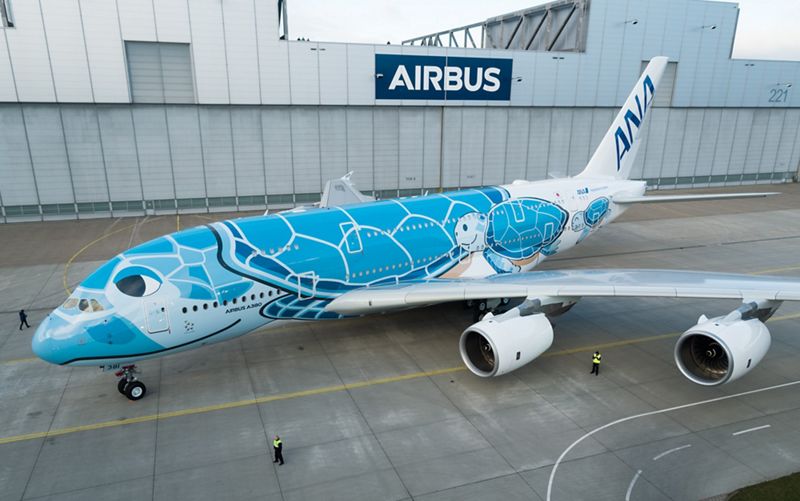
"First Airbus A380 for All Nippon Airways." 2018. Airbus S.A.S.
The US established the first transcontinental airmail service in 1920. By the late 1930s, it had aerial routes to most countries in the Western Hemisphere. Airmail prompted aeronautical advancements; planes could carry heavier loads and travel distances faster. In 1958, the transatlantic airmail route was reduced by 6 hours after implementing jetliners. Now, hundreds of letters and packages are delivered by air worldwide every day.
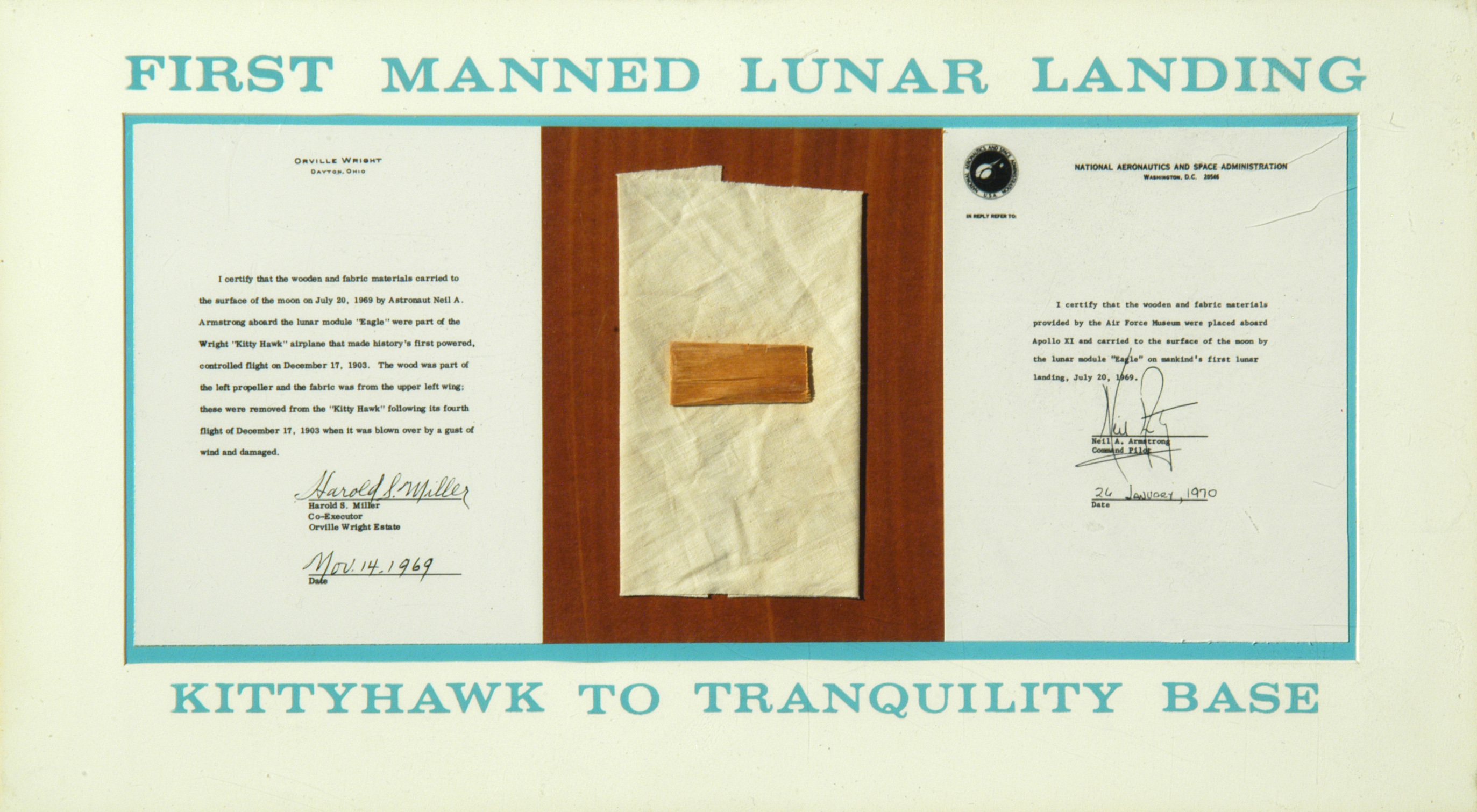
"1903 Wright Flyer Fabric Taken to Moon Apollo 11." 1969. Smithsonian Institution.
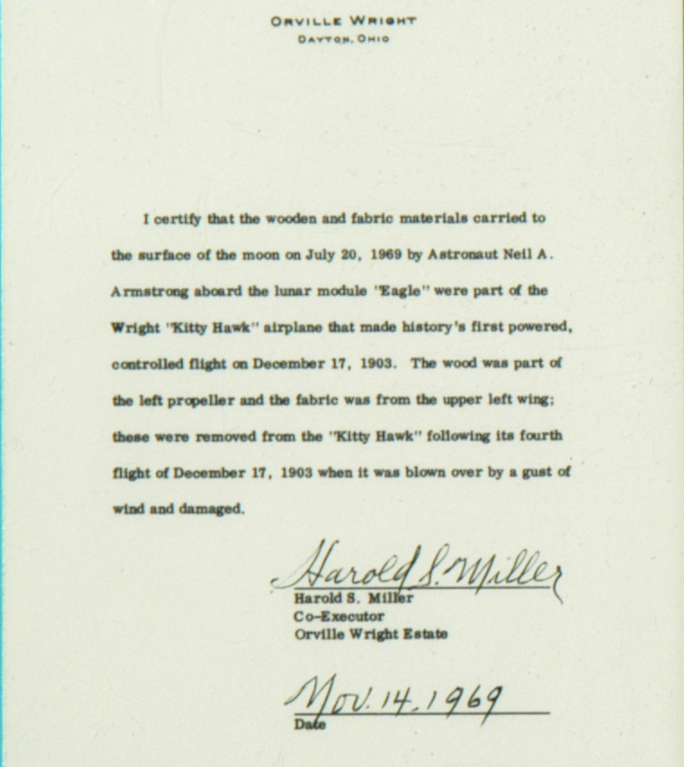
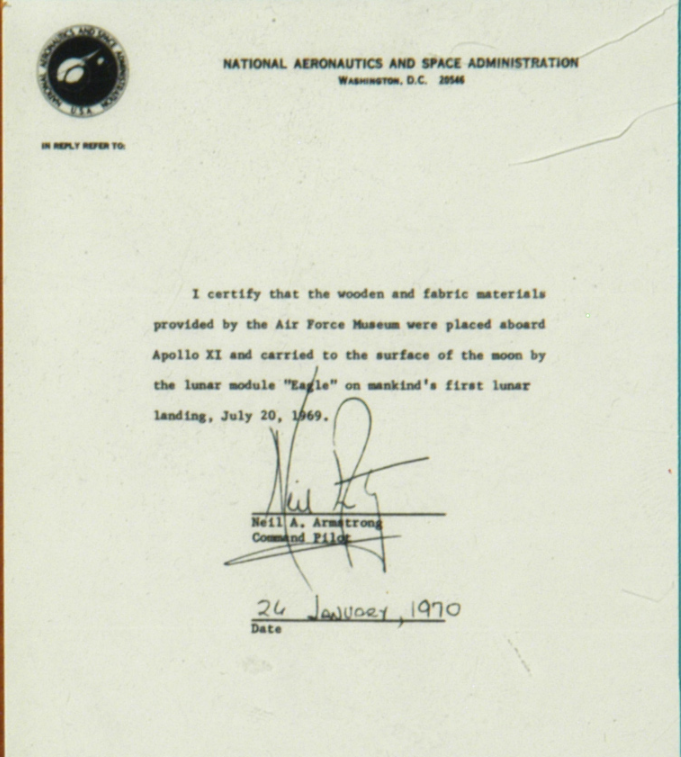
Honoring their contributions to all forms of aviation, a piece of the 1903 flyer was in Apollo 11, which broke another aeronautical barrier by reaching the moon. The Wrights' understanding of aerodynamics and engineering set the foundation for future aeronautical engineers. Bigger, faster, and more efficient aircraft now exist because of their hard work.
“By original scientific research, the Wright brothers discovered the principles of human flight. As inventors, builders and flyers, they further developed the aeroplane, taught man to fly, and opened the era of aviation.”
~ Caption for 1903 Wright Flyer Display at the Smithsonian
Thanks to the Wright Brothers’ aeronautical breakthrough, nations are better connected and protected. Aircraft, now vital to society, constantly and efficiently transport goods, people, and letters across far distances, connecting people and augmenting economies, while also strengthening military protection and scientific exploration.